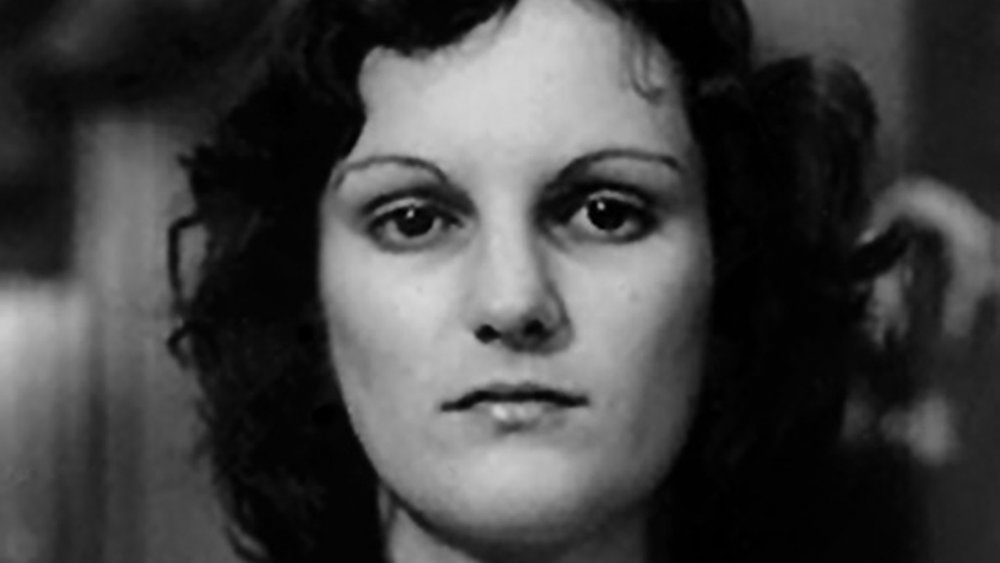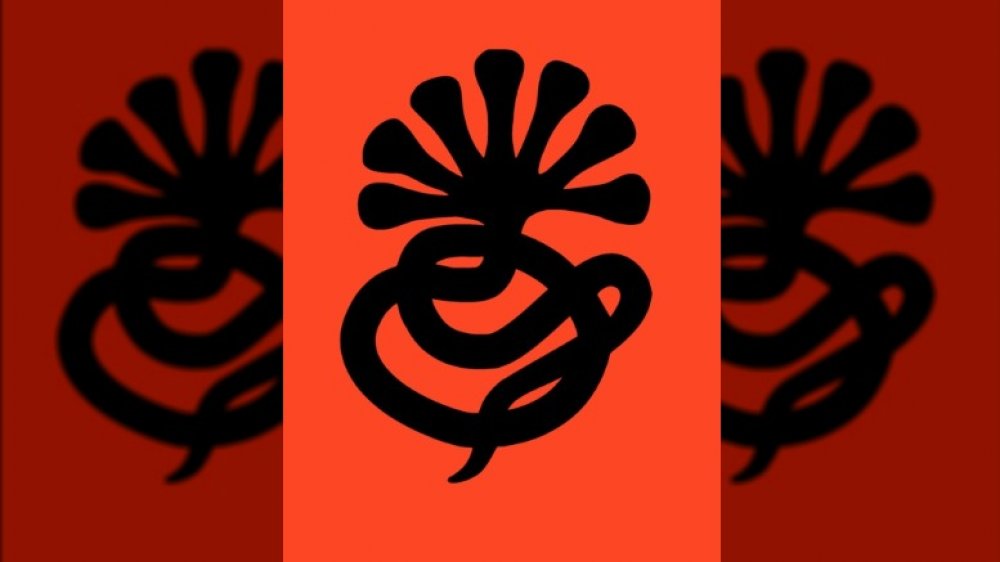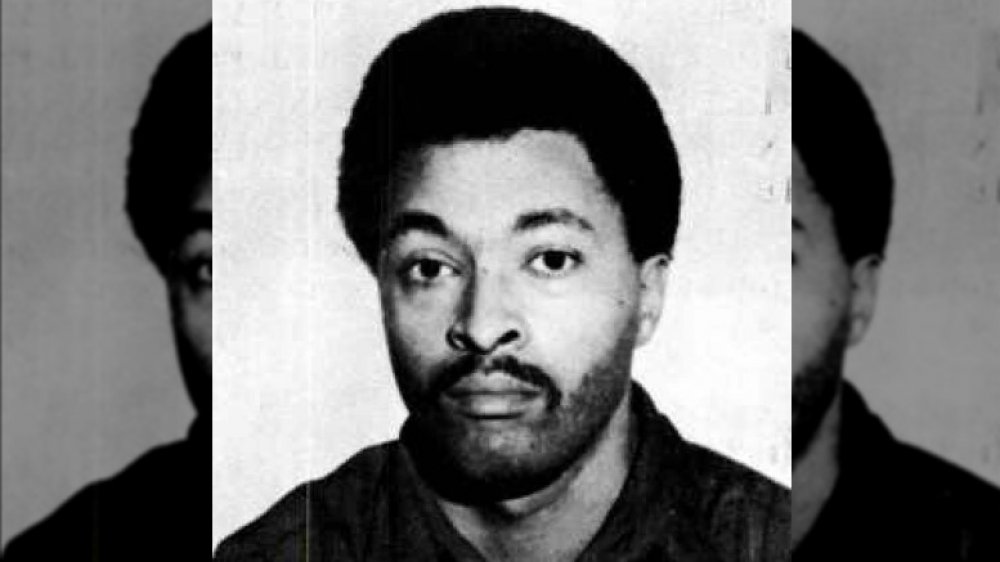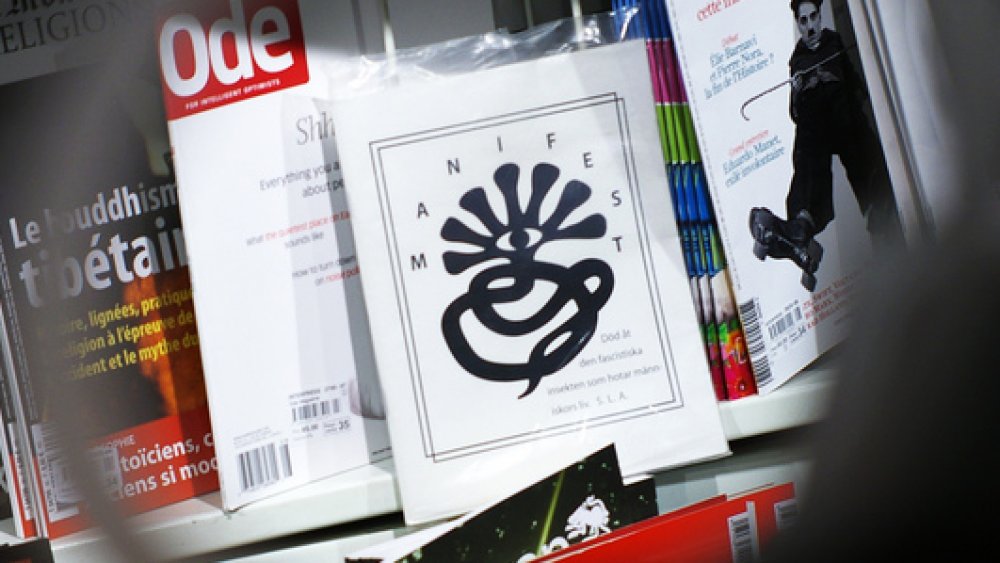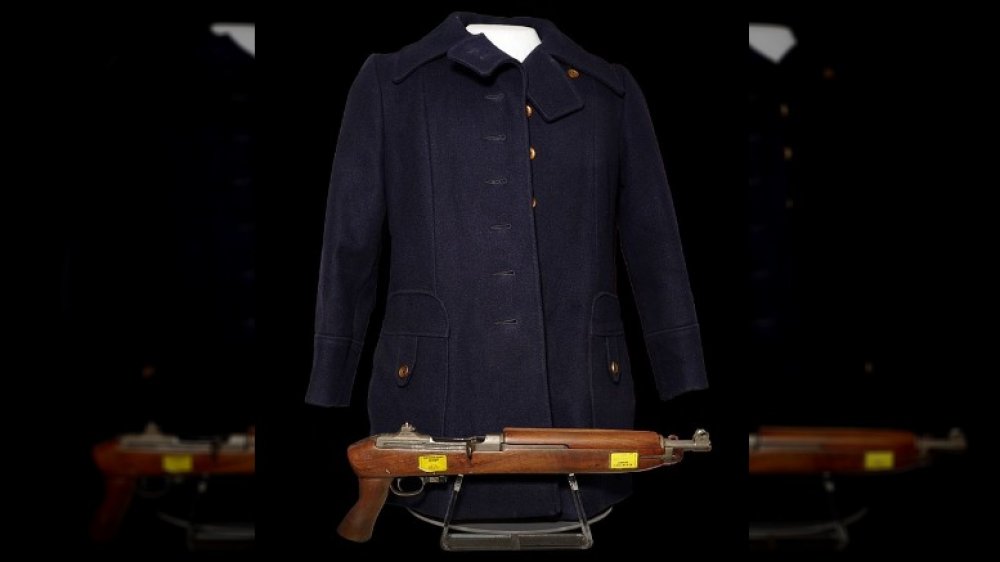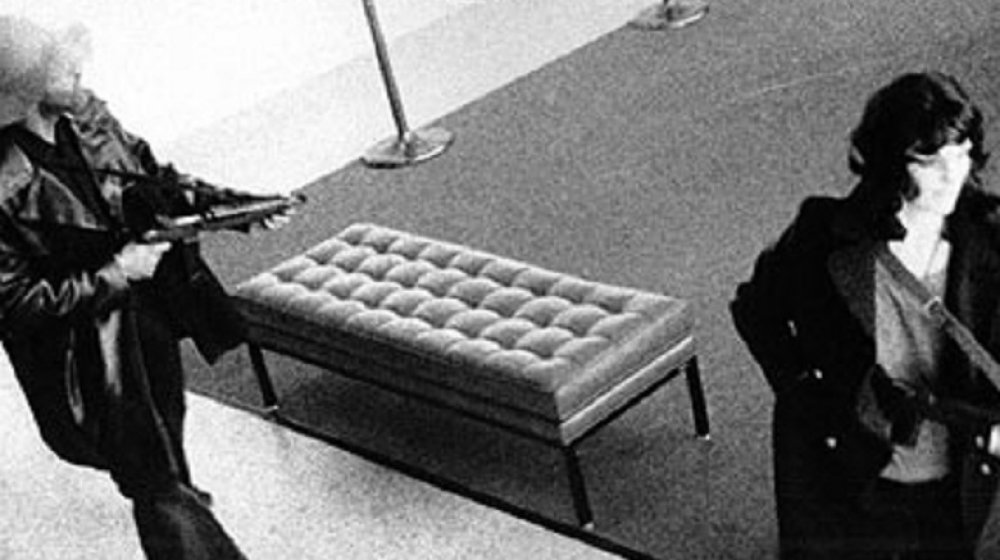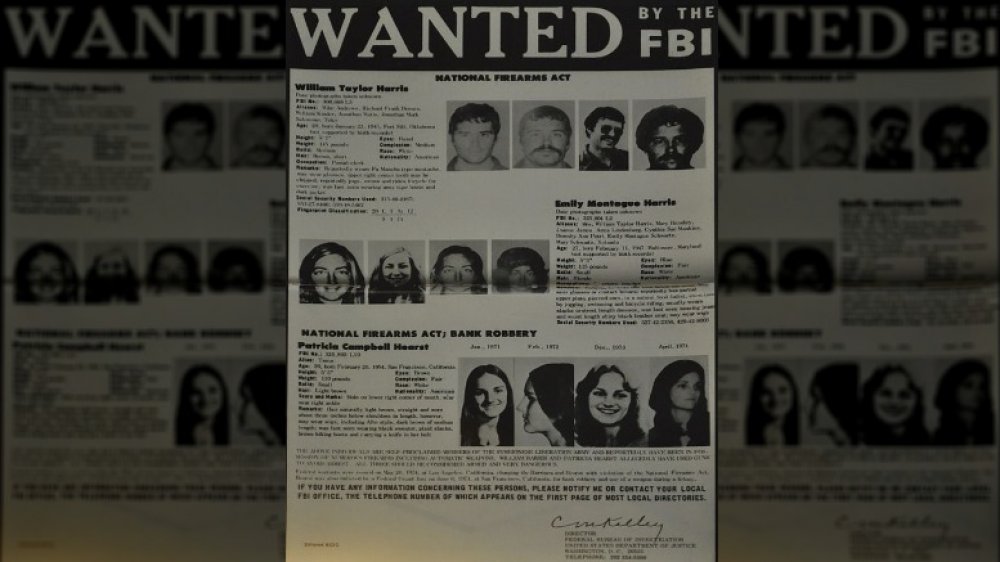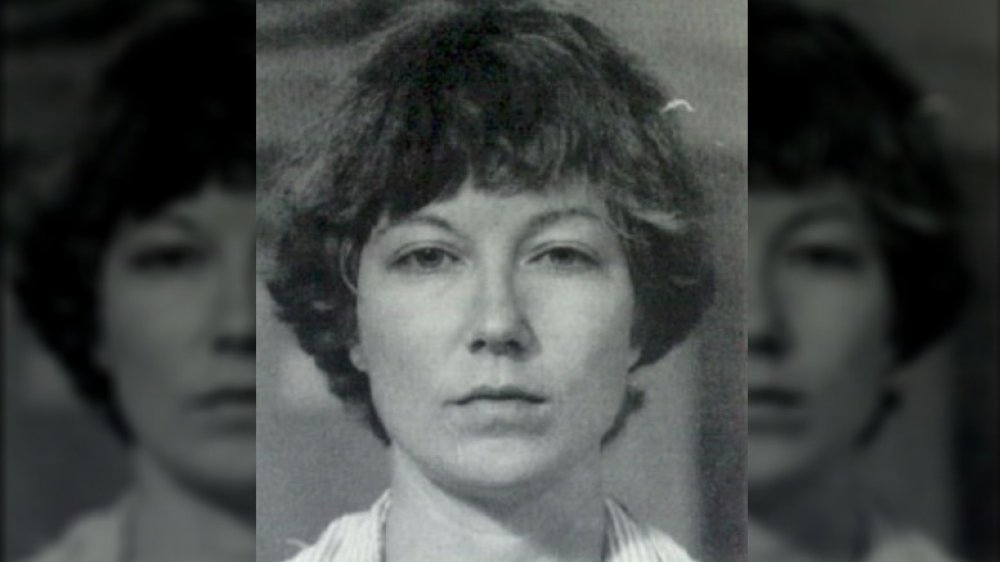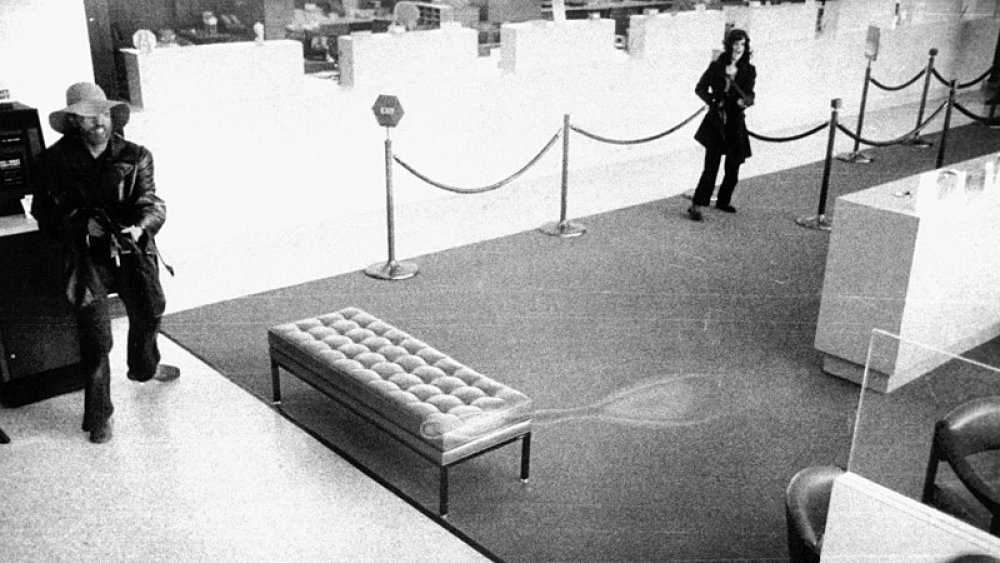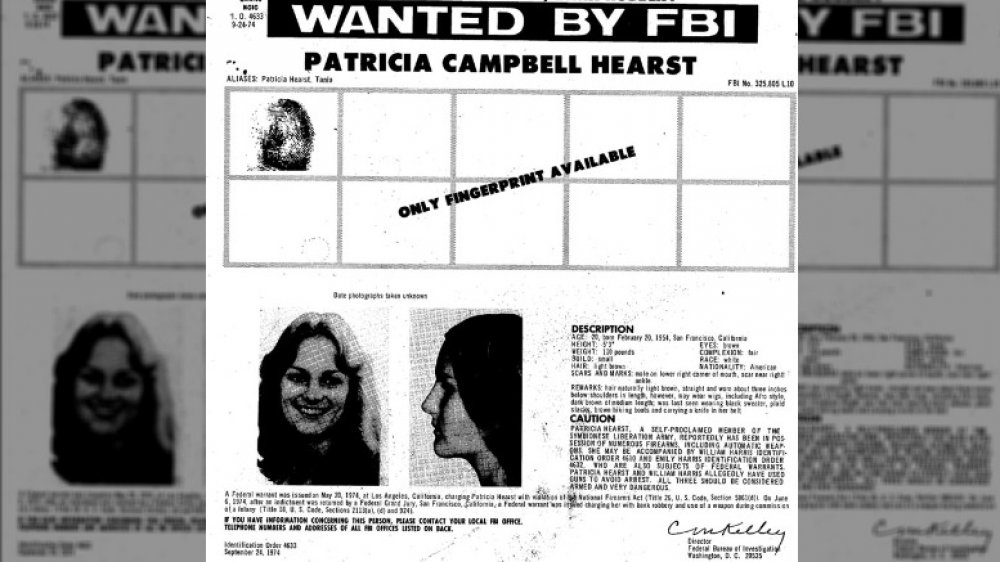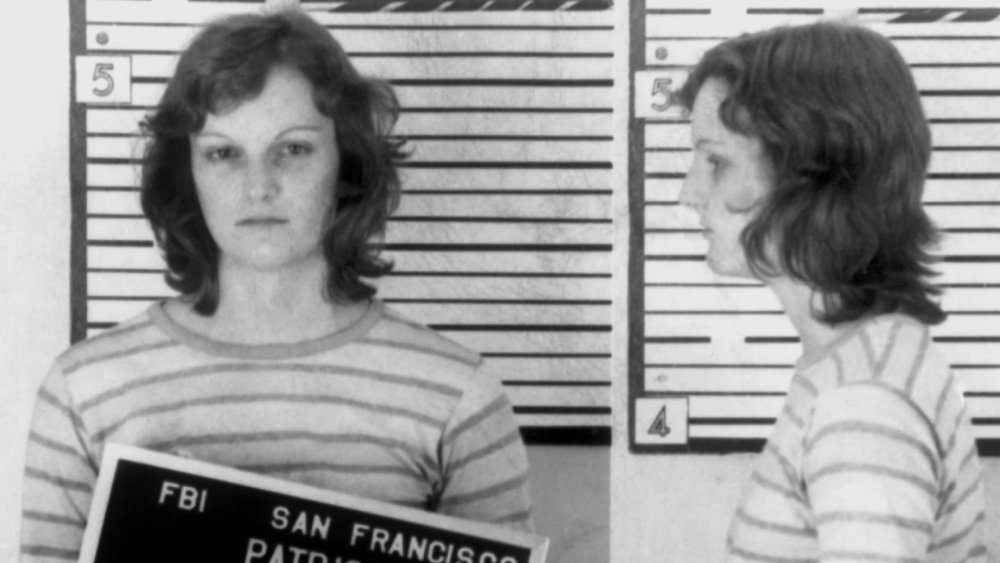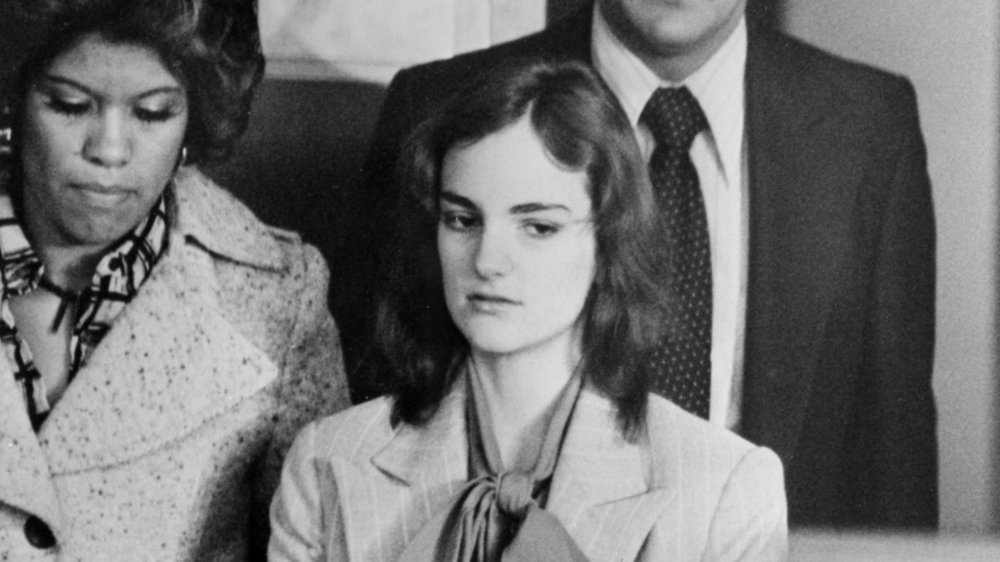What The 19 Months Patty Hearst Was Kidnapped Were Like
In 1974, the world was shocked when Patricia Hearst, granddaughter of newspaper magnate William Randolph Hearst, was kidnapped. Her captors were "a small cadre of young white radicals led by a charismatic but unstable black ex-convict named Donald DeFreeze," according to The Washington Post.
Called the Symbionese Liberation Army, the group was not one of the more famous or important left-wing revolutionary factions of the 1970s, but they were extremely violent. They used any menacing means at their disposal, be it carjacking, bombing, robbing, or kidnapping — even murder. The year before Hearst's abduction, the SLA had assassinated a school superintendent for seemingly no reason. That was another hallmark of their crimes: They didn't appear to care who got hurt. Even the Black Panthers and the Weather Underground let it be known that they thought the SLA was "too extreme and undisciplined."
But the SLA was desperate for media attention. They wanted to commit an act that would be "the spark that ignites a full-scale rebellion by the masses." So they kidnapped Patty Hearst. This is what the next 19 months were like for her.
The kidnapping of Patty Hearst
The SLA wasn't out to target 19-year-old Patty Hearst specifically, according to Season of the Witch: Enchantment, Terror, and Deliverance in the City of Love. Instead, they wanted to kidnap one of any number of high-profile individuals. Anyone rich and powerful would do, to make the point that the oppressed were fighting back. The SLA had a blue journal listing major names like President Richard Nixon, California Governor Ronald Reagan, and Senator Edward Kennedy.
But those people had bodyguards and other layers of protection that would make kidnapping them almost impossible. Patty Hearst, on the other hand, lived just down the street from the SLA's headquarters in Berkeley, California. And despite the fact she came from a big-name publishing family, Hearst didn't have any sort of security. They knew abducting her would be simple, and her last name would make it a big deal. The media would have to pay attention to them.
On the night of February 4, 1974, three SLA members, brandishing guns, got into Patty Hearst's apartment and beat up her fiancé, Steven Weed, with a wine bottle. They gagged and blindfolded Patty. Still in her bathrobe, Hearst was dragged down the concrete steps of her apartment complex. The SLA members smashed her face with the butt of one of their rifles and then threw her in the trunk of their car. As they fled, they fired off a round of bullets. Hearst was driven to an SLA safe house, and her 19-month ordeal began.
The prisoner of war
At the safe house, Patty Hearst was immediately thrown into a closet, which she testified at her trial was about five or six feet by three feet. There were no lights, and it was extremely hot. The SLA had not untied her or taken off her blindfold, and they just left Hearst there, bound and alone, for days.
Eventually, she was given food, but due to her absolute terror at her abduction, she was unable to eat for over a week. Not eating probably partially alleviated another issue, since the SLA didn't allow Hearst to leave the closet to go to the bathroom, either. Hearst says she was repeatedly raped during this time, as well, per Season of the Witch, although one SLA member would later "vehemently dispute" this detail. No one spoke to her, except when Donald DeFreeze (pictured) demanded that she make a tape recording to release to the media. According to PBS, she said, "Mom, Dad, I'm with a combat unit that's armed with automatic weapons... I want to get out of here... and I just hope you'll do what they say."
She was, effectively, being tortured. A preeminent psychiatrist who examined Patty Hearst for hours before her trial "pronounced [her] a 'classic case' which met all the psychological criteria of a coerced prisoner of war." As Hearst would, perhaps unnecessarily, explain years later, "After being blindfolded several weeks and left in a closet, you're just not thinking the way you normally would."
The education of Patty Hearst
Eventually, Patty Hearst was let out of the closet, at least some of the time. Her captors then started playing a sick mental game, alternatively threatening her life and talking with her. Normally, these were political conversations. According to PBS, the SLA "educated her about capitalism's 'crimes' — and her parents' complicity." They would "rap" to her for hours and read to her from the newspaper, per journalist Maureen Orth. These "propaganda sessions" lasted over a month. While she knew most of it was crazy, Hearst said some of it sank in, and she realized how sheltered she'd been growing up.
But as one of the SLA members had discovered while surveilling Hearst before the kidnapping, she was no "rich b*tch," Season of the Witch records. Hearst had attended protests at Berkeley and had even convinced her father to take a more liberal approach at his newspaper. While originally, the kidnapping plan had been to exchange Hearst for two SLA members who were in prison, at some point, the plan changed to recruiting her to their side and turning it into a "public relations coup."
At her trial, Hearst would testify that once she was let out of the closet and unblindfolded, she had "classes every day." But they weren't just on political topics. The Star says her instruction included "daily drills in the apartment, including calisthenics and weapons training with their unloaded guns." But all Hearst knew was that she was out of the closet, and she was alive.
Patty Hearst joins the SLA
On April 3, two months after she was kidnapped, the SLA released a tape of heiress Patty Hearst informing the world that she had denounced the "corporate state," reports PBS. She called her family "fascist pigs" and announced that she was joining the SLA in their revolution. And Patty was no longer Patty: She was changing her name to Tania, in honor of a "comrade who fought alongside Che [Guevara] in Bolivia," per Famous Trials. The public immediately started wondering if her conversion was real or just a tactic to stay alive. The year before, hostages in a Stockholm bank robbery had seemed to bond in some way with their captors. Could this be something similar?
There would be other recordings and written statements. Her fiancé Steven Weed discovered he was now her "ex-fiancé" in one of these missives, and Hearst would declare her love for one of the men who'd raped her in the closet at the beginning of her kidnapping, Willie Wolfe. Whatever sort of relationship they may have had was cut short when Wolfe died in a shootout with police. Hearst released another statement calling him "the gentlest, most beautiful man I've ever known."
Hearst would later testify at her trial that all her statements were made because if she refused, SLA members punched her in the face and threatened to kill her. Whether she meant the things she said or was forced to do them under duress is still a topic of debate to this day.
Patty Hearst the bank robber
The bank robbery on April 15, 1974, remains the most infamous and controversial moment of Patty Heart's kidnapping. When they tried Hearst for the crime, the prosecution — and indeed the SLA members themselves — said her participation in the armed robbery of a Hibernia Bank branch in San Francisco two months after her kidnapping proved that she had truly joined the terrorist group. After all, she had a gun. According to one of the bank guards, Hearst shouted, "Lie down or I'll shoot your motherf*cking heads off." Famous Trials says she announced, "I am Tania," and let those in the bank know "we are not fooling around." Images from the bank surveillance show Hearst moving around the lobby, pointing her gun at people. It certainly looks like she's an active participant.
The surveillance footage was meticulously analyzed by experts and the public. Some argued that other SLA members' guns were trained on Hearst, as if to make sure she didn't try anything. Hearst herself said that the robbery was only a few days after she was let out of the closet, that she'd been given strict instructions to say her new name so everyone knew she was there, and she needed to be seen on the cameras. There are also arguments that her gun was jammed, making it unusable. Her defense at trial argued she was in fear for her life and essentially brainwashed.
Two innocent bystanders were shot and injured during the robbery, and the SLA made off with $10,692.
At first, Patty Hearst was just a witness
The public was shocked by the images of young, rich Patty Hearst robbing a bank with a gun in her hands, but the FBI wasn't quick to blame her for anything. Instead, according to PBS, they were clear that the Bureau only wanted to talk to her as a material witness to a crime. This meant, essentially, that they thought she was more victim with information than perpetrator, at least for the moment. The FBI also said that images from the security camera appeared to show that SLA members had their guns trained on Hearst, so therefore she probably wasn't robbing a bank of her own free will.
The day after the wanted posters were issued, Patty Hearst was heard on another recording, this time disagreeing with the FBI that anyone had their guns pointed at her and stating that she had happily participated in the robbery and that contrary to what some people were theorizing, her gun had been loaded and she'd been ready to use it. If the holdup hadn't been enough proof of her dedication to revolution, her future actions would be.
By this point, Hearst says she had been thoroughly convinced by the SLA that if the FBI found her, they would kill her. She also claimed she didn't understand, or was misled about, the difference between being wanted as a witness and as a participant. Regardless, public opinion on her complicity really started to turn after the bank robbery.
The incident at Mel's Sporting Goods
The public didn't have to wait long to find out if Patty Hearst would really shoot a gun. A month after the bank robbery, on May 16, 1974, while on the run in southern California, Hearst and two SLA members, William and Emily Harris (pictured), decided to go shopping. They went to Mel's Sporting Goods, and the Harrises left Hearst in a van in the parking lot. While inside, William Harris tried to steal a pair of socks (says the Los Angeles Times) or an ammunition case (per Famous Trials). When the store manager apprehended the shoplifters outside, there was a scuffle.
That's when Patty Hearst fired 30 rounds at the store, and the people in front of it.
While she would later say she was "aiming at nothing in particular" over the crowd's heads, officers who were first on the scene disputed this. One says his reaction to seeing the resulting damage was, "Oh my God, we've had a slaughter here." But by some miracle, no one was killed or even injured. Shooting through the van's window with a submachine gun and then a semiautomatic carbine, Hearst shattered the building's windows. One bullet might have killed an employee, had it not been deflected by the pen in his pocket. The store manager dove behind a light pole that blocked at least two bullets. He returned fire with William Harris' own gun, which he'd wrestled off the SLA member. But the Harrises made it to the van, and the trio sped away.
Patty Hearst cared about her own hostage
In order to ditch their vehicle, Emily Harris pretended to be interested in buying a van with a "For Sale" sign on it in front of a house. The high school senior who was selling it, Thomas Matthews, went with her on what he thought was a test drive. Instead, she asked if they could pick up two of her friends. William Harris stuck a gun in Matthews' face, told him they were with the SLA and needed to use his van, and said that they wouldn't hurt him as long as he didn't do anything stupid.
According to his testimony at her trial, Matthews and Patty Hearst sat on the floor in the back of the van, while the Harrises tried to find a place to buy a hacksaw so they could remove the handcuff on William's wrist. Hearst, who had been introduced as Tania, told Matthews about her kidnapping, the bank robbery, and even about the kind of bullets she had. She said she didn't think her father had done enough to get her released. (He'd given in to ransom demands to give food to the poor, but it had gone badly, and he'd refused further demands from the SLA.)
After they located a hacksaw, bizarrely, the trio took Matthews to a drive-in movie. After that, Matthews was covered with a blanket, and he said Hearst kept patting his head and asking if he was okay. They finally released Matthews the next day.
Patty Hearst went on the run
The trio had spent the night with Thomas Matthews in the Hollywood Hills after their "friends" stood them up at the drive-in movie. It was lucky for them they didn't go back to the place they were staying. According to Famous Trials, the next day, the police "mounted an assault" on the SLA's Los Angeles hideout. As viewers watched on live television, the two sides exchanged 9,000 rounds of gunfire and tear gas grenades. Six SLA members were killed.
After that, Patty Hearst says she was even more afraid of the police, knowing what they did to those at the hideout. A warrant was finally issued for her arrest, so she was in much bigger trouble. Her response at the time was to criticize the "fascist pig media" for making those killed in the assault look bad. She said that "out of the ashes," she "was reborn." For whatever reason, instead of leaving the SLA, she stayed and participated in more crimes.
In 1975, Patty Hearst was the getaway driver at another bank robbery, according to the Pittsburgh Post-Gazette. This time, a bystander was shot and killed. There were two other bank robberies as well. And NPR reports that Hearst helped plant bombs around northern California. An author of a book on her kidnapping points out that she had plenty of opportunities to escape during this time, or to tell authority figures on hand who she really was, but she didn't. The question is: Why?
Patty Hearst is finally arrested ... or rescued?
According to Time, the police and FBI were slowly gathering evidence over the next year. Finally, they knew enough to make an arrest. On September 18, 1975, over 19 months after Patty Hearst was first taken by the SLA from her apartment, unexpected visitors showed up at her home yet again. This time, it was law enforcement acting on a tip, and that home was an SLA hideout in San Francisco.
Since the shootout, the terrorist group had been made up of "remnants," reports SFGate. Three members and Hearst were staying on the top floor of a house. The owner told FBI agent Tom Padden and Officer Timothy Casey that "these girls were upstairs giggling and laughing." They went up the stairs and through the door saw Hearst sitting at a table. She was "very pale" and told them not to shoot, that she would go with them. When Officer Casey cuffed her, he asked what she was doing there, and Hearst replied, "I'd rather not tell you about it."
Hearst faced more than 22 state and federal charges, including armed bank robbery. Her bail was set at $1.5 million, but at her arraignment, she still did a revolutionary salute. Then, when being booked into jail, she listed her occupation as "urban guerrilla." Her lawyer relayed a message from Hearst: "Tell everybody that I'm smiling, that I feel free and strong and I send my greetings and love to all the sisters and brothers out there."
The aftermath of Patty Hearst's kidnapping
In her 1981 book about her experiences, Every Secret Thing, Hearst said it took a couple weeks for her brain to get back to normal, before she stopped with the salutes and the urban guerrilla talk. Journalist Maureen Orth reports Hearst's IQ had dropped dramatically (if temporarily), she'd lost an alarming amount of weight, had taken up chain smoking, and couldn't remember large chunks of her life before the kidnapping.
Patty Hearst's trial began on February 4, 1976, which was ironically two years to the day after her kidnapping. Virtually everything about it was controversial, from the judge's seeming lack of impartiality, to her defense's claims of Stockholm Syndrome, to the fact that a kidnapping victim was on trial in the first place. After 12 hours of deliberation, with some of the jurors in tears, they pronounced Patty Hearst guilty of armed robbery.
She was sentenced to seven years in prison, but many people didn't think she should be there. Slate says there was a "massive national movement" to lighten her punishment. One of her most famous defenders was John Wayne, as were six of the jurors who convicted her in the first place. Hearst had served 22 months when President Jimmy Carter commuted her sentence in 1979. On his last day as president in 2001, Bill Clinton gave her a full pardon.
Two months after her release from prison, Patty Hearst married her bodyguard, a decision psychiatrists could probably have a field day with.
